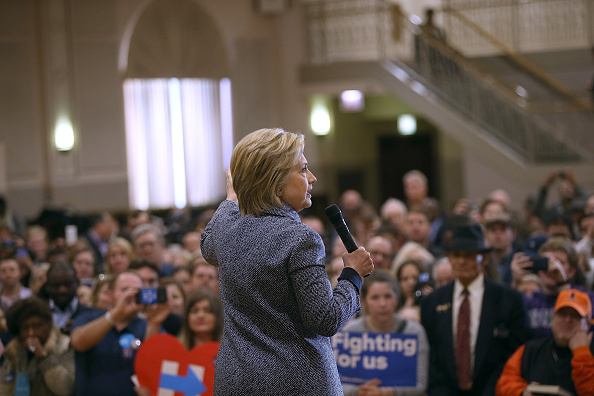
In presidential primaries, winning a state is often followed by raucous campaign rallies and glowing television interviews. But behind the flashy facade lies an unforgiving math that ends up determining who wins the day.
Hillary Clinton learned this lesson the hard way in 2008, as Barack Obama racked up delegates any way he could. But her victory in a tiny 189-person caucus in the Northern Mariana Islands Saturday shows her campaign has taken note.
Clinton’s win in the tropical archipelago was as small as they get. She won the caucus by 37 votes, a total of 102 to Sanders’ 65—not much different from the turnout in a high school class president election at a rural school. The total turnout in the caucus was about as big as a single one of Iowa’s 1,681 caucus precincts.
But for those keeping score, Clinton netted as many delegates on Saturday as she won against Sanders seven weeks earlier in Iowa, where both candidates invested millions of dollars and manic effort to win. Her two-delegate advantage on the miniature Northern Mariana Islands also balances out Sanders’ win in a state like Oklahoma, where Sanders organized heavily, had staff and office space and personally campaigned, but in the end only netted three delegates against Clinton.
The micro-victory on the Northern Mariana Islands—7,800 miles away from their Brooklyn headquarters—is a good example of Team Clinton’s persistence. The win cost the Clinton campaign just a bit of clever long-distance organizing to win 4 of the islands’ 6 delegates, including a little more than 100 voter contacts and some digital targeting, according to a Clinton campaign official.
It’s part of Clinton campaign manager Robby Mook’s 50-state (plus territories) strategy that awards Clinton delegates wherever they can find them. Mook’s play has meant grabbing low-hanging fruit and squeezing delegates out of Southern states. It is a delegate count to the nomination, an accountant’s strategy against Sanders. To hear Team Clinton tell it, it’s working. “We are nearing the point where our delegate lead will effectively become insurmountable,” Mook said on a conference call with reporters last week.
Their diligence has helped widen their lead over Sanders, even as he takes home solid wins against Clinton, frustrating her aides with his persistence. He has won blowouts and upsets in states like New Hampshire and Minnesota and a surprise victory in Michigan that reinvigorated his campaign.
But partly due to the Democratic Party’s proportional assignment of delegates by percentage of the popular vote, losers can still earn delegates. Clinton continues to put away a firm delegate lead in her march to the Democratic Convention: She has had landslide victories, particularly in the South, that overwhelmingly shifted the delegate count in her favor. Her delegate count of 1,231 (including superdelegates) compared with Sanders’ 576 puts her more than halfway to the nomination.
This is the argument many on the Clinton campaign make: even if Sanders wins headlines, Clinton notches delegates. Mook told reporters in last week’s conference call that while Sanders has targeted victories in individual states, the Clinton campaign is aiming to organize everywhere, amassing solid delegates counts even in states where they lost.
In the Northern Mariana Islands, the victory was engineered remotely. Clinton made no visits to the Western Pacific Islands, which are near Guam, and had no staff there at caucus time. According to the Clinton campaign official, the campaign identified more than a hundred people there and sent out Get Out the Vote emails with information on the caucus.
The campaign also collected 50 digital commitments to caucus through targeted ads, or Facebook or other posts, and tracked down 13 people over the phone or personal email who had purchased a Northern Mariana Islander for Hillary shirt.
On Tuesday, polls show that Sanders could win a Rust Belt state like Ohio or Illinois. But Sanders may not make any headway in his delegate count against Clinton if she wins big in Florida in North Carolina. That’s what the her mathematicians are counting on.
More Must-Reads from TIME
- Donald Trump Is TIME's 2024 Person of the Year
- Why We Chose Trump as Person of the Year
- Is Intermittent Fasting Good or Bad for You?
- The 100 Must-Read Books of 2024
- The 20 Best Christmas TV Episodes
- Column: If Optimism Feels Ridiculous Now, Try Hope
- The Future of Climate Action Is Trade Policy
- Merle Bombardieri Is Helping People Make the Baby Decision
Contact us at letters@time.com